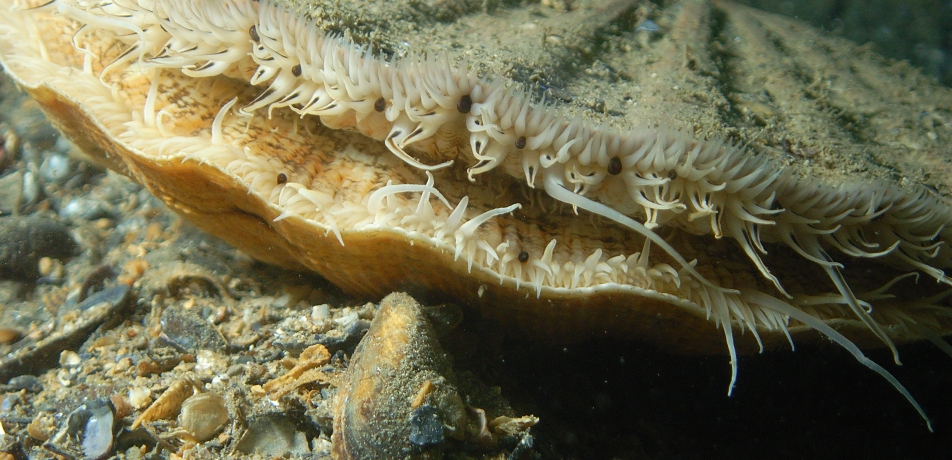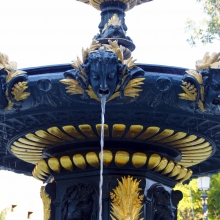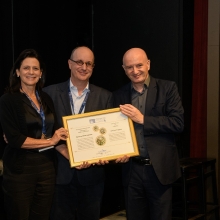Scallop secrets revealed
Briefs

Credit: Ceri Jones, Haven Diving Services
While some invertebrates can only sense light and dark, scientists have long suspected that the scallop—a sea creature that has no brain, but hundreds of eyes, each containing not one, but two retinas—uses visual cues to avoid underwater predators. Now, a postdoctoral fellow at the Weizmann Institute has revealed a hidden secret of the scallop eye: a dual-action mirror that bears a striking resemblance to the curved, segmented mirrors of reflecting telescopes.
The scallop’s ocular mirror is made up of millions of intricately layered crystals of guanine—the same material that gives fish scales their silvery glint. Postdoctoral researcher Dr. Benjamin Palmer recently discovered that scallops produce exquisite layers of a shape of guanine crystal never seen before in nature: a flat square.
The study was performed with Profs. Steven Weiner and Lia Addadi in the Department of Structural Biology, as well as Prof. Dan Oron of the Department of Physics of Complex Systems.
Dr. Palmer determined how light passes through the mirror, then bounces back, with one retina receiving information about what’s straight ahead, and the other getting a better view of the eye’s periphery. This divided focus may give scallops a survival advantage, allowing them to watch for predators while foraging for food. Dr. Palmer’s research gives the scientific community something else: new knowledge about how the scallop’s specialized crystals manipulate light—findings that might eventually make their way into engineered materials, or novel imaging systems for watery environments.
Prof. Lia Addadi is supported by the Jeanne and Joseph Nissim Foundation for Life Sciences Research. She is the incumbent of the Dorothy and Patrick Gorman Professorial Chair.
Prof. Stephen Weiner is supported by the Dangoor Accelerator Mass Spectrometer Laboratory, the European Research Council, and the George Schwartzman Fund. He is the incumbent of the Dr. Walter and Dr. Trude Borchardt Professorial Chair in Structural Biology.








